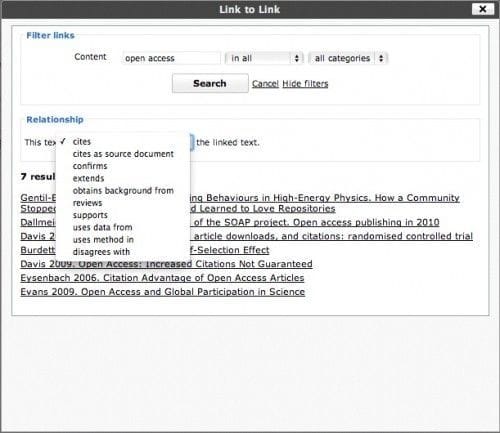One of the annoyances with bibliographies as we use them for scholarly papers is that is usually unclear why a particular paper was cited. It is often possible for readers to gather this information by looking at the citation in the context of the surrounding text, but this is very difficult to automate. A highly cited paper might contain a method that everybody uses, might be a review, or it might contain information that everybody disagrees with. David Shotton has thought a lot about this problem and has come up with CiTO, the Citation Typing Ontology:
CiTO, the Citation Typing Ontology, is an ontology for describing the nature of reference citations in scientific research articles and other scholarly works, both to other such publications and also to Web information resources, and for publishing these descriptions on the Semantic Web.
Using CiTO obviously means extra work for the author, so for widespread use it is very important that CiTO is as easy to use as possible. The first step would be to reduce the number of possible relationships to a manageable number, e.g. not more than ten (CiTO defines more than 20 relationships). Following a dinner discussion at the Beyond the PDF workshop, David Shotton kindly provided 10 popular CiTO relationships to Alex Wade from Microsoft Research and me. I made three little changes to the list: added “cites” as the default generic relationship, dropped “shares authors with”, as this can be done better with unique author identifiers, and added “disagrees with” to have at least one relationship that expresses disagreement.
In the next step I added these relationships to my Link to Link WordPress plugin, and I released the updated version (1.1) today. Using CiTO is an option that can be turned off, but the plugin makes it very easy to use CiTO relationships when inserting references into a blog post.
The CiTO relationship is stored in the rel attribute of the link that is created – currently as free-form text, but this can be changed to the cito:DisagreesWith format. This information can easily be extracted by computers, or made available in the bibliography to readers. The Reference Manager CiteULike is also supporting CiTO, but we need many more CiTO tools for authors.


